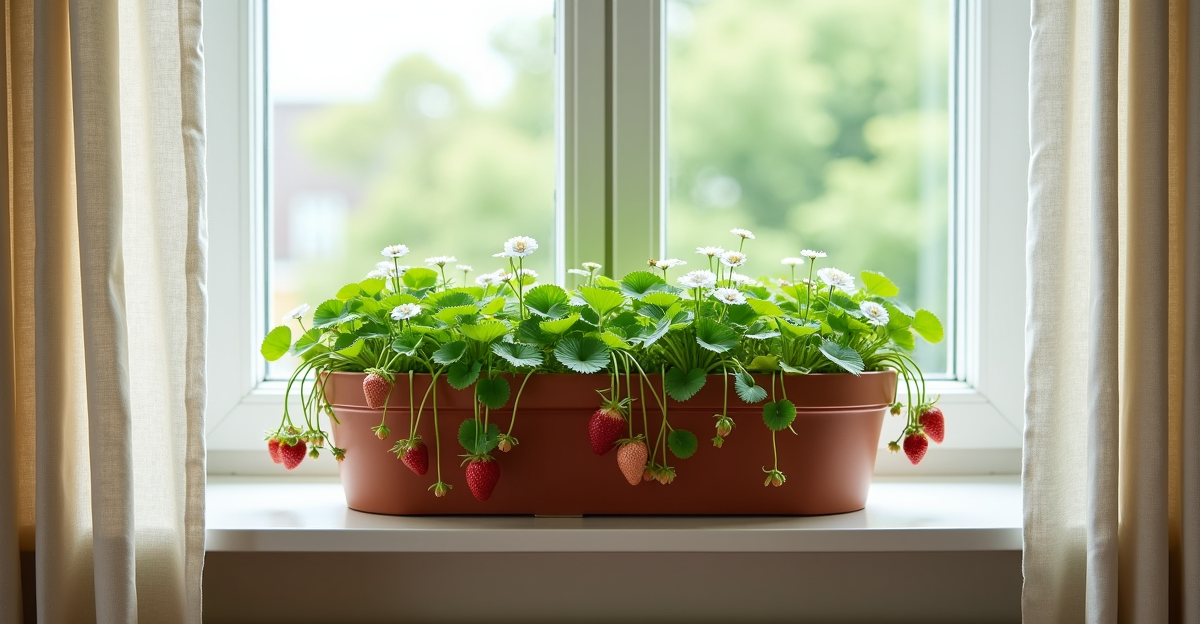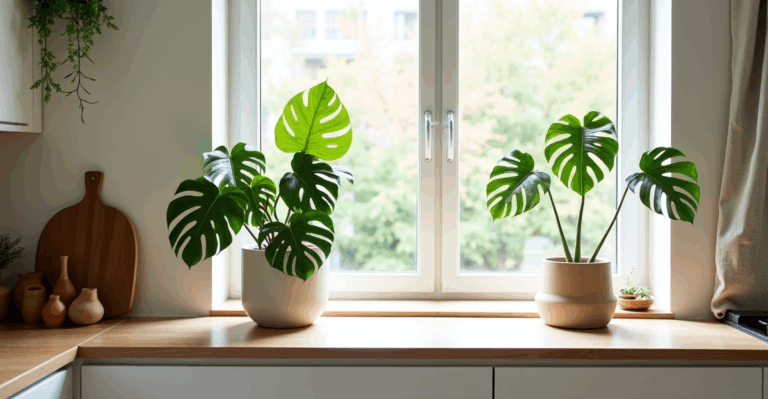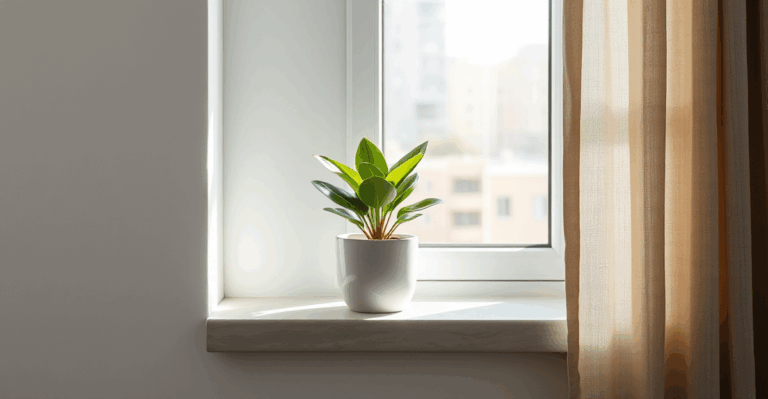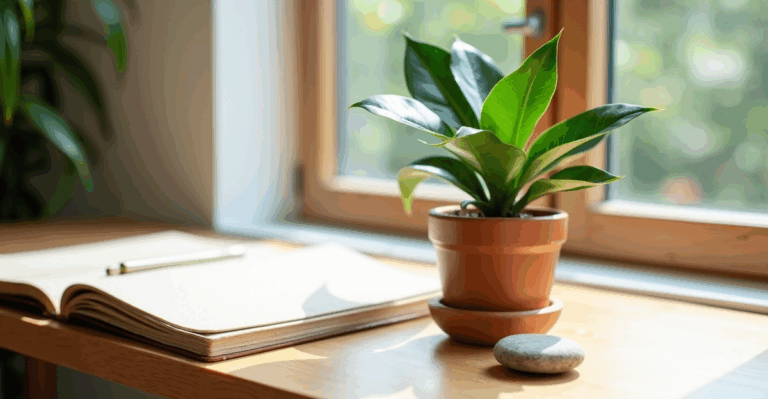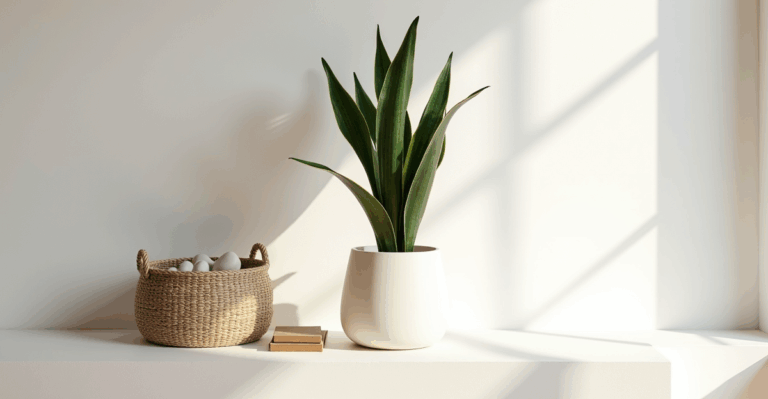Strawberries in Planters: Trailers That Fit Your Windowsill
You’ve got that perfect spot on your east-facing windowsill—soft morning light, a clear view of the street, and just enough room for one more plant. You’ve tried a few herbs, a small succulent, maybe even a little mint. But then you spot a tiny strawberry plant at the nursery, its runners already spilling over the edge of a nursery pot. It’s so cute, and you think, Why not? You take it home, place it right where it gets that gentle morning sun, and wait. A week later, the leaves look a little limp. You water it, thinking it’s thirsty, but then the leaves start turning yellow. You’re left wondering: Do I need a special planter? A grow light? Is this even possible indoors?
We’ve been there too. Strawberries aren’t typically the first plant you’d think of for a windowsill, especially when you’re used to pothos or snake plants. But they’re not just for gardens. With the right variety and planter, they can be a charming, low-maintenance addition to your indoor oasis—especially if they trail or mound neatly. The key isn’t about forcing them to fruit like a backyard patch (though we’ll be honest, indoor fruiting is a bonus, not a guarantee); it’s about finding the right fit for your space, light, and care style. Let’s skip the hype and get into what actually works.
Why Trailing or Mounding Matters for Indoor Strawberries
Most people try to grow standard garden strawberries indoors, which is a recipe for frustration. These need full sun (6+ hours direct), consistent moisture, and a lot of space. Indoor conditions rarely match that. Instead, focus on trailing varieties (like Alpine or Everbearing) or mounding types (like Short Day cultivars) that naturally stay compact or drape gracefully.
The difference matters because:
– Trailers drape over the sides of your planter, making them perfect for shelves, hanging planters, or the edge of a windowsill. They don’t need to be in the sun—they just need bright light near the sun.
– Mounders stay low and bushy, ideal for small pots on a desk or narrow shelf. They’re less likely to get leggy in lower light.
Most folks miss this nuance. They buy a “strawberry plant” without checking if it’s a trailing or mounding type, then struggle when it outgrows their space or looks sparse. Pro tip: When shopping, look for Fragaria vesca (Alpine) or Fragaria × ananassa cultivars labeled “trailing” or “mounding.” Avoid anything called “June-bearing”—it’s too big, too thirsty, and not suited for indoor life.
The Right Planter: Weight, Drainage, and Your Room’s Reality
This is where most indoor strawberry attempts fail. People use regular plastic pots, forget about drainage, and wonder why roots are rotting. Or they try a heavy ceramic pot that’s too big for their windowsill, making it hard to move for light adjustments.
Here’s what actually works:
– Lightweight + Drainage: A pot with drainage holes (like unglazed terracotta or a modern ceramic) is non-negotiable. Strawberries hate soggy feet. If you’re using a cachepot, always add a liner or place the plant on a tray with stones to catch excess water. No exceptions.
– Size Matters: A 6–8 inch diameter pot is perfect for a trailing or mounding plant. Too small, and roots get cramped; too big, and the soil stays wet too long.
– Material & Style: Heavy pots (like thick ceramic) can feel stable but are a pain to move for light shifts. Lightweight materials (like recycled plastic or our 3D-printed options) let you rotate the plant toward the window every few days without straining your back.
Real example: My south-facing bedroom gets bright, indirect light most of the day (no direct sun through the window), but the radiator underneath the sill makes the spot chilly. I use a lightweight, 7-inch planter with drainage holes so I can move the plant to the warmer windowsill in the morning. It’s not ideal, but it’s workable because the pot’s weight doesn’t make moving it a chore.
Care That’s Actually Doable (No Grow Lights Needed)
Strawberries indoors aren’t about chasing perfect fruit—they’re about healthy, happy foliage. Here’s how to keep yours thriving with minimal fuss:
Light: Bright, indirect light is ideal (like an east or west window). No direct midday sun (it burns leaves), but they’ll tolerate lower light better than most fruiting plants. If your only window is north-facing, they’ll survive but look thin and leggy. Fix: Place them on a shelf near a south or west window, or use a small LED grow light for 3–4 hours a day (not full-time—over-lighting stresses them).
Watering: Let the top 2–3 inches of soil dry out between waterings. Stick your finger in—it should feel slightly dry. Overwatering is the #1 killer. In winter, reduce frequency: water only when the top inch feels dry. Pro tip: In humid climates or dry winter air, add a humidity tray (pebbles + water) under the planter to keep leaves from drying out.
Seasonal Shifts: In spring/summer, they might need more water (they’re actively growing). In fall/winter, they slow down. Adjust accordingly—don’t stick to a rigid schedule. Edge case: If your planter has poor drainage (like a self-watering pot), you’ll need to water less often and flush the soil monthly to prevent salt buildup.
Why You Shouldn’t Expect Fruit (and That’s Okay)
Let’s be real: Indoor strawberries rarely produce fruit like garden plants. The light isn’t strong enough, the pollination is limited (no bees!), and they’re usually grown for foliage, not fruit. That’s not a failure—it’s a realistic goal. Our focus should be on healthy, trailing foliage that adds a soft, textural element to your plant display. It’s about the look and the care, not the yield.
Trade-off alert: If you want fruit, you’ll need a grow light (250–400 PPFD for 8–10 hours/day) and manual pollination (a cotton swab to transfer pollen between flowers). It’s doable but adds effort. For most of us, the trailing greenery is the reward.
Styling Your Strawberry Plant (Without the Mess)
This is where the real fun begins. A trailing strawberry plant adds movement and texture to your setup. Here’s how to style it like a pro:
- On a Shelf: Place it at the edge of a shelf, letting runners drape over the side. It pairs beautifully with a small succulent in a different planter or a trailing pothos.
- Hanging Planter: Use a lightweight, woven or 3D-printed hanging basket. The trailing runners will cascade down, creating a living “curtain” over a bookshelf or entryway.
- Wall Planter: A shallow, wall-mounted planter (like our 3D-printed wall pockets) works great for mounding types. It keeps the plant off the floor and adds vertical interest.
- Avoid: Heavy, deep pots that look awkward on a small shelf. Also, don’t place it under a bright, direct window—it’ll burn the leaves faster than a sunburn.
Real scenario: My friend’s north-facing living room has dry, warm air from vents. She uses a lightweight 3D-printed planter with drainage (so it’s easy to move) and places it on a small riser next to a west-facing window. The plant gets indirect light, and the planter’s modern shape matches her minimalist decor. It’s a tiny, happy part of her space—no fruit, but a real conversation starter.
Key Takeaways
- Choose trailing or mounding varieties (Alpine or Everbearing), not garden types.
- Prioritize drainage and a lightweight pot—no heavy ceramic for indoor use.
- Water when the top 2–3 inches are dry—overwatering is the biggest risk.
- Focus on foliage, not fruit—it’s about style and care, not a harvest.
When you’re ready to grow your setup, explore our 3D-printed planters.

